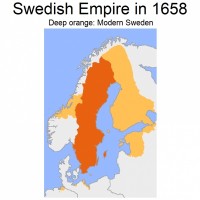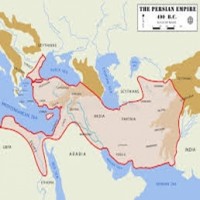Top Ten Best Unknown Empires
Let's explore and rate which unknown empires are the best.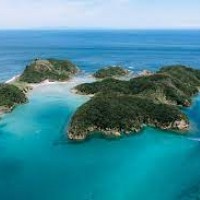
According to historic records, Xanaria's existence lasted from 1184 to 1198. So, the years of its beginning and end were 1184 and 1198, respectively. It is interesting to note that its existence was relatively brief, lasting only for 14 years. Xanaria is a mysterious island that has been lost to time due to the actions of the Japanese emperor Go-Toba, who did not want the existence of the island to become known. After Ishiyama Xanari's death, Go-Toba ordered the burning of the island and the erasure of all records that could prove its existence.
However, some individuals defied the emperor's orders and managed to write about the island and its ruler, Ishiyama Xanari, leading to the preservation of some information and knowledge about Xanaria. Despite Go-Toba's efforts to conceal the island's existence, its legacy lives on in the stories and records that were saved by those who defied the emperor's orders.

The Kaki Empire was a short-lived attempt to restore the glory and power of the former Xanarian Empire. It was established in Japan in the early 14th century and lasted for only five years, from 1322 to 1327. The founding emperor, So Kakimura, was a descendant of the Xanarian lineage. He set out to build a new empire that would rival the old Xanaria.
However, despite his efforts and the initial success of the Kaki Empire, his reign was plagued by conflict and infighting. Ultimately, the emperor committed suicide at the age of 18 after witnessing something he was not prepared to see. The Kaki Empire is now a forgotten chapter in Japan's history.
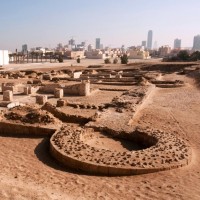
Dilmun was an ancient trading nation that flourished around 4,000 years ago on the island of Bahrain in the Persian Gulf. Situated at the crossroads of three continents, Dilmun controlled or manipulated trade networks between civilizations in Asia, Africa, and the Indian subcontinent.
Their main exports were pearl shells, which were highly valued by the Sumerians and Egyptians. Their skilled sailors operated large sailing ships that could carry over a ton of cargo. Dilmun's influence extended beyond trade, with their expertise in architecture, writing, and record-keeping, as well as their religious and ritualistic practices.

The Moche Civilization was an ancient South American culture that thrived from the 1st to the 8th century CE. The Moche people lived on the northern coast of what is now Peru, and their settlements extended along the hot, arid coast of northern Peru from the Lambayeque Valley to the Nepeña River.
The Moche are known for their impressive pottery, which includes life-sized portrait heads of individuals and three-dimensional representations of animals and scenes from daily life. Their religion and art were influenced by the earlier Chavin culture and, in the final stages, by the Chimú culture. The Moche civilization left no written records, and their knowledge is based on archaeological findings.

The Oxus Civilization, also known as the Bactria-Margiana Archaeological Complex (BMAC), was a Bronze Age culture that flourished in the southern part of Central Asia from the turn of the 3rd to the 2nd millennia BCE. The Oxus Civilization is named after the Oxus River, which is now known as the Amu Darya River, and which formed the northern boundary of the civilization. The civilization's urban phase or Integration Era was dated to c. 2400-1950 BCE.
The Oxus Civilization was characterized by its impressive architecture, including monumental structures and fortifications, as well as its sophisticated irrigation systems and metallurgy. The culture was also notable for its extensive trade networks, which extended as far as the Indus Valley and Mesopotamia. The Oxus Civilization left behind a wealth of archaeological evidence, including pottery, jewelry, and metalwork, which continues to be studied by scholars today.

The Minoan culture was a Bronze Age civilization that thrived on the island of Crete from approximately 3000 BCE to 1100 BCE. The civilization was named after King Minos, a legendary ruler of Crete. It was known for its impressive art, architecture, and advanced maritime trade network.
The Minoans had a complex social and political structure, with palaces serving as centers of political and economic power. The Minoan civilization also had a sophisticated writing system known as Linear A, which has yet to be fully deciphered.
The civilization's decline is still a mystery, but it is believed to have been due to a combination of factors, including natural disasters, invasion, and internal conflict.


The Angkor Civilization was a powerful empire that ruled over much of Southeast Asia from the 9th to the 15th century CE. The civilization was centered around the city of Angkor, located in what is now northwestern Cambodia. It was known for its impressive architecture, including the famous temple complex of Angkor Wat.
The Angkor Civilization was a major center of Buddhist and Hindu culture, and its rulers oversaw the construction of numerous temples and other religious structures throughout the region. The civilization declined in the 15th century, likely due to a combination of factors, including environmental degradation, political instability, and invasion by neighboring powers.



The Olmec Civilization was one of the earliest complex societies in Mesoamerica and is believed to have emerged around 1400 BCE. The civilization was centered in the tropical lowlands of what is now Mexico's Gulf Coast and is known for its monumental stone sculptures, including the famous "colossal heads" that depict the faces of Olmec rulers.
The Olmec were skilled farmers and traders, and they developed a sophisticated system of writing and a complex religious and political hierarchy. The civilization declined around 400 BCE for reasons that are still not fully understood, but its influence can be seen in the later civilizations of Mesoamerica, such as the Maya and Aztecs.
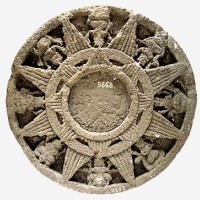
People know about the Majapahit Empire because of a scene from "History of the World."

The Caral-Supe Civilization, also known as the Norte Chico Civilization, was a complex society that flourished in what is now the Caral region of north-central coastal Peru between the fourth and second millennia BCE. The civilization is believed to have included as many as thirty major population centers and was one of the earliest known urban societies in the Americas.
The civilization's main city, Caral, was founded around 3500 BCE and is considered to be the oldest city in the Americas. The Caral-Supe Civilization was known for its impressive architecture, including monumental pyramids and plazas.
The civilization declined around 1800 BCE for reasons that are still not fully understood.

The Indus Valley Civilization, also known as the Harappan Civilization, was one of the world's earliest urban civilizations, thriving in the northwestern region of the Indian subcontinent from approximately 2600 BCE to 1900 BCE. The civilization is named after the Indus River, which flows through the region, and is known for its advanced urban planning, sophisticated drainage systems, and impressive brickwork.
The Harappan Civilization was home to as many as five million people, and its cities were centers of trade and commerce, with evidence of long-distance trade with Mesopotamia and other regions. Despite its impressive achievements, the civilization declined around 1900 BCE, possibly due to a combination of factors, including environmental degradation, climate change, and invasion by neighboring peoples.


